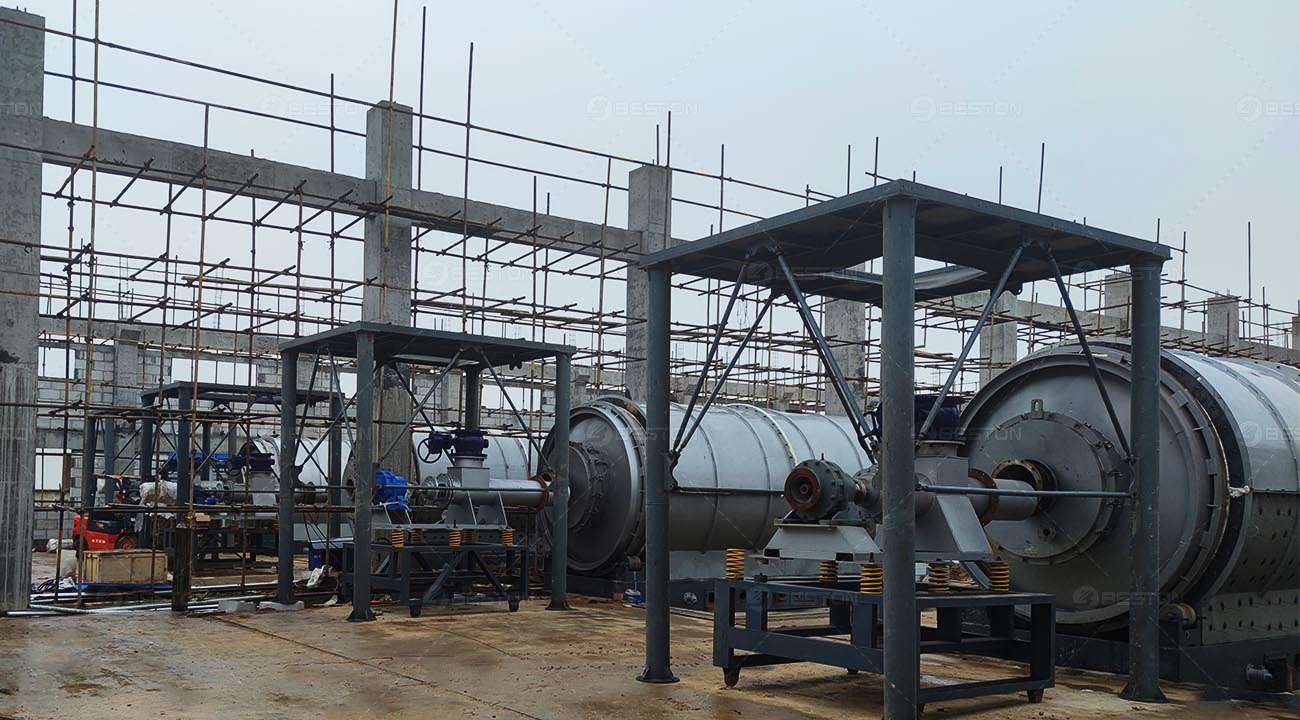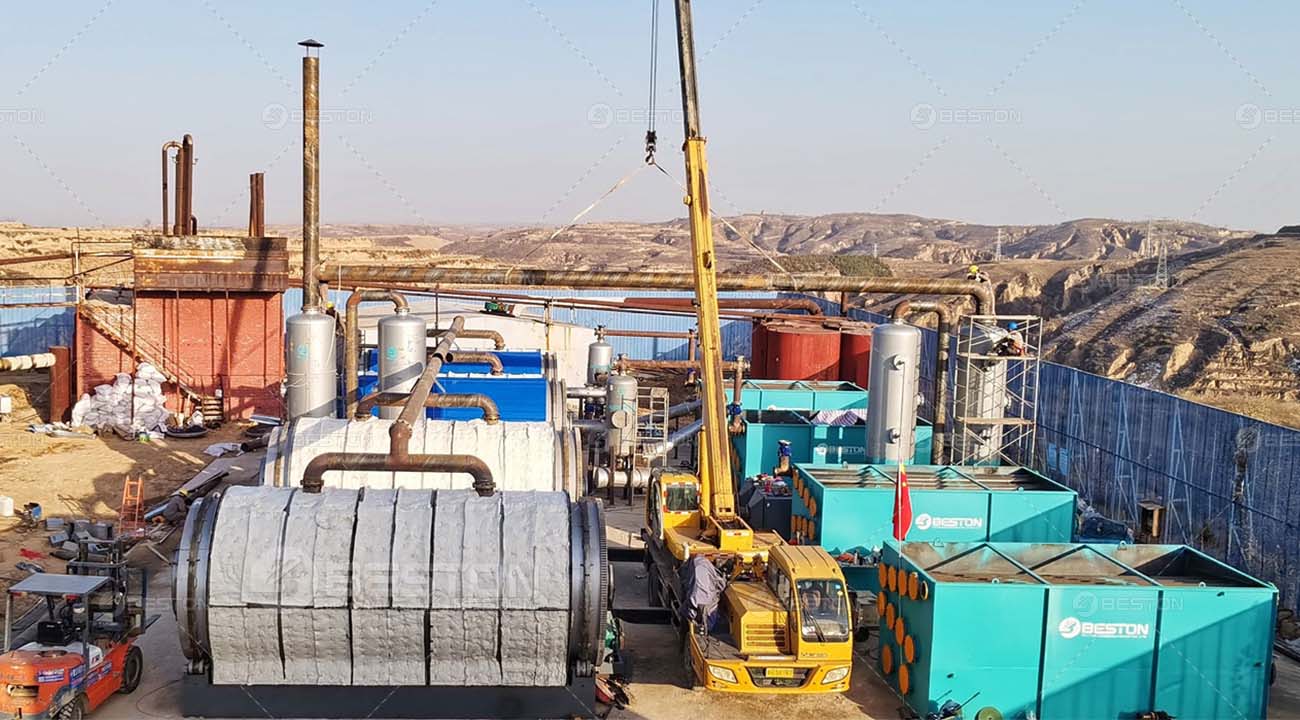Maintenance plays a crucial role in ensuring the optimal performance and longevity of a waste tyre pyrolysis plant. With the increasing focus on sustainable waste management, waste tyre pyrolysis has emerged as an effective process. This article provides a comprehensive guide on maintaining a waste tyre pyrolysis plant to maximize its efficiency and productivity.

Waste Tyre Pyrolysis Plant
Preparing for Maintenance
Before initiating any maintenance activities, it is essential to make necessary preparations to ensure safety and efficiency.
Ensuring Safety Precautions
- Safety gear and equipment: Prioritize the use of appropriate safety gear and equipment, such as gloves, goggles, and protective clothing, to minimize the risk of accidents or injuries during maintenance tasks.
- Lockout/tagout procedures: Implement lockout/tagout procedures to isolate and de-energize waste tyre pyrolysis plant‘s power sources before performing any maintenance activities, ensuring the safety of the personnel involved.
Establishing a Maintenance Schedule
- Regular inspections and cleaning: Develop a schedule for routine inspections and cleaning of the plant’s components, including reactors, pipelines, and storage units. This helps identify any signs of wear, corrosion, or blockages, enabling timely maintenance interventions.
- Planned maintenance activities: Incorporate planned maintenance activities into the schedule, such as replacing consumables, conducting performance tests, and addressing specific maintenance requirements. This proactive approach minimizes downtime and enhances overall plant performance.
Routine Maintenance Tasks
Regular and systematic maintenance tasks are essential to keep the waste tyre pyrolysis plant operating at its best.
Monitoring and Replacing Consumables
- Checking oil levels and filters: Regularly monitor oil levels in the plant’s machinery and ensure the filters are clean and functioning effectively. Timely oil replacement and filter changes optimize the equipment’s performance and prevent potential damage.
- Inspecting and replacing reactor lining: Inspect the reactor lining for signs of wear, cracks, or erosion. If any damage is detected, it should be promptly repaired or replaced to maintain the plant’s efficiency and prevent leaks.
Cleaning and Unclogging Components
- Removing carbon deposits: Over time, carbon deposits can accumulate on the plant’s surfaces, affecting heat transfer and overall efficiency. Regular cleaning of the reactor, heat exchangers, and other components removes these deposits and ensures optimal performance.
- Clearing blockages in gas pipelines: Blockages in gas pipelines can disrupt the pyrolysis process and reduce output. Regular inspections and cleaning of gas pipelines prevent clogging and ensure smooth gas flow, maximizing production efficiency.

Preventive Maintenance Measures
Implementing preventive maintenance measures helps prevent breakdowns and prolong the lifespan of the continuous pyrolysis plant.
Lubrication and Greasing
- Identifying lubrication points: Identify and lubricate the key moving parts and components of the plant to minimize friction and wear. This includes bearings, gears, and conveyor systems.
- Choosing appropriate lubricants: Select lubricants suitable for the specific operating conditions and temperature ranges of the plant. High-quality lubricants with the necessary viscosity and additives ensure proper lubrication and protect against corrosion.
Electrical System Maintenance
- Inspecting wiring and connections: Regularly inspect the electrical wiring, connections, and control panels for any signs of damage or loose connections. Addressing these issues promptly reduces the risk of electrical failures or malfunctions.
- Testing and replacing faulty components: Perform regular tests, such as voltage and current checks, to identify any faulty electrical components. Replace defective parts promptly to maintain the safety and reliability of the plant.
Troubleshooting and Repair
Efficient troubleshooting and timely repairs are vital to address common issues and minimize plant downtime.
Identifying Common Issues
- Overheating and pressure fluctuations: Monitor temperature and pressure levels closely to identify any deviations from normal operating conditions. Overheating or pressure fluctuations may indicate underlying issues, such as clogged heat exchangers or malfunctioning valves.
- Gas leakage and emission problems: Regularly inspect the plant for gas leaks and ensure the emissions meet the required environmental standards. Common sources of gas leakage include faulty seals, connectors, or flanges.
Steps to Resolve Problems
- Analyzing root causes: In case of any issues, conduct a thorough analysis to identify the root causes. This may involve examining operational parameters, conducting tests, and consulting equipment manuals. Understanding the underlying problems is crucial for implementing effective solutions.
- Implementing appropriate repairs: Once the root causes are identified, implement the necessary repairs or replacements. This may involve replacing faulty components, repairing damaged sections, or recalibrating sensors and controls. Adhering to pyrolysis plant manufacturers guidelines and industry best practices ensures effective and long-lasting solutions.
Professional Maintenance Assistance
Seeking professional maintenance assistance can provide added expertise and support for optimal plant performance.
Importance of Professional Service
- Complex maintenance tasks: Waste tyre pyrolysis plants involve intricate systems and processes that may require specialized knowledge and equipment for maintenance. Engaging professionals ensures that complex tasks are performed accurately and efficiently.
- Ensuring compliance with regulations: Waste management regulations and environmental standards are continuously evolving. Professional service providers stay updated with these regulations, ensuring that the plant remains compliant and avoids any legal or environmental issues.
Choosing a Reputable Service Provider
- Experience and expertise: Select a service provider with extensive experience in maintaining waste tyre pyrolysis plants. They should possess the technical knowledge and expertise to handle various maintenance tasks effectively.
- Customer reviews and references: Research customer reviews and seek references to gauge the service provider’s reputation and reliability. Positive feedback and recommendations from satisfied clients indicate their trustworthiness and quality of service. If you still have questions about plant maintenance, please consult: https://bestonasia.com/
Conclusion
Effective maintenance is crucial for optimizing the performance, longevity, and profitability of a waste tyre pyrolysis plant. By following the outlined steps, including safety precautions, regular maintenance tasks, preventive measures, troubleshooting, and professional assistance when needed, operators can ensure that their waste tyre pyrolysis plant operates at its best, contributing to sustainable waste management practices.